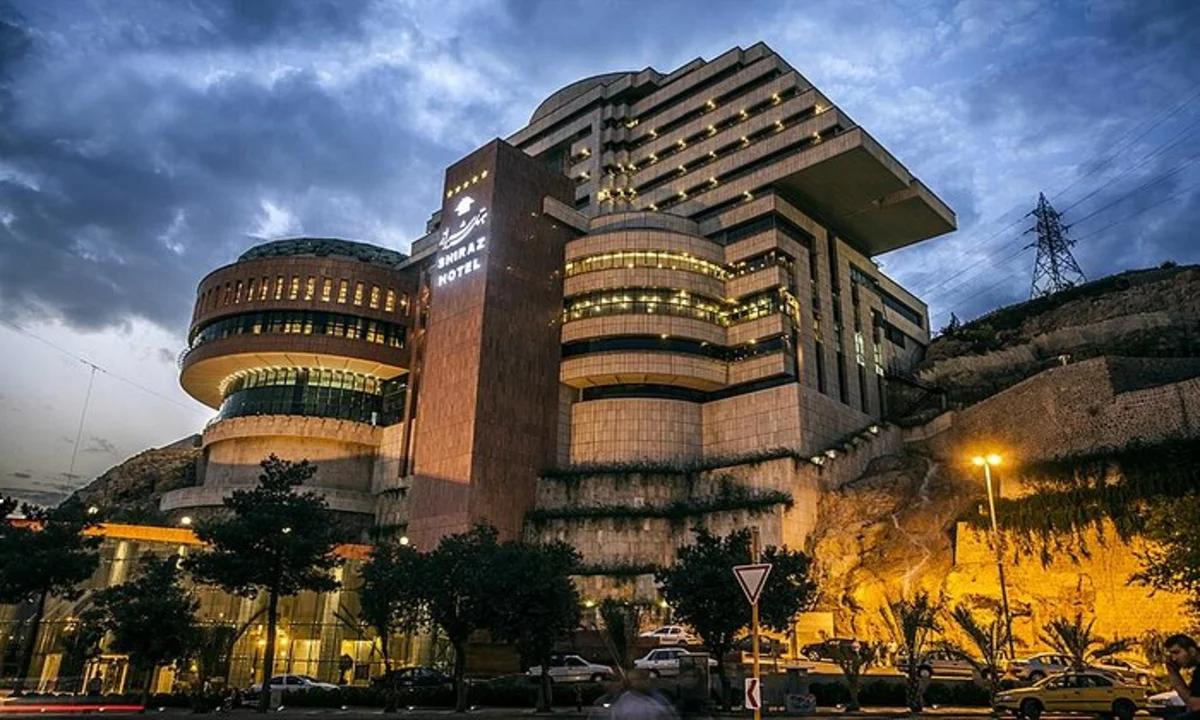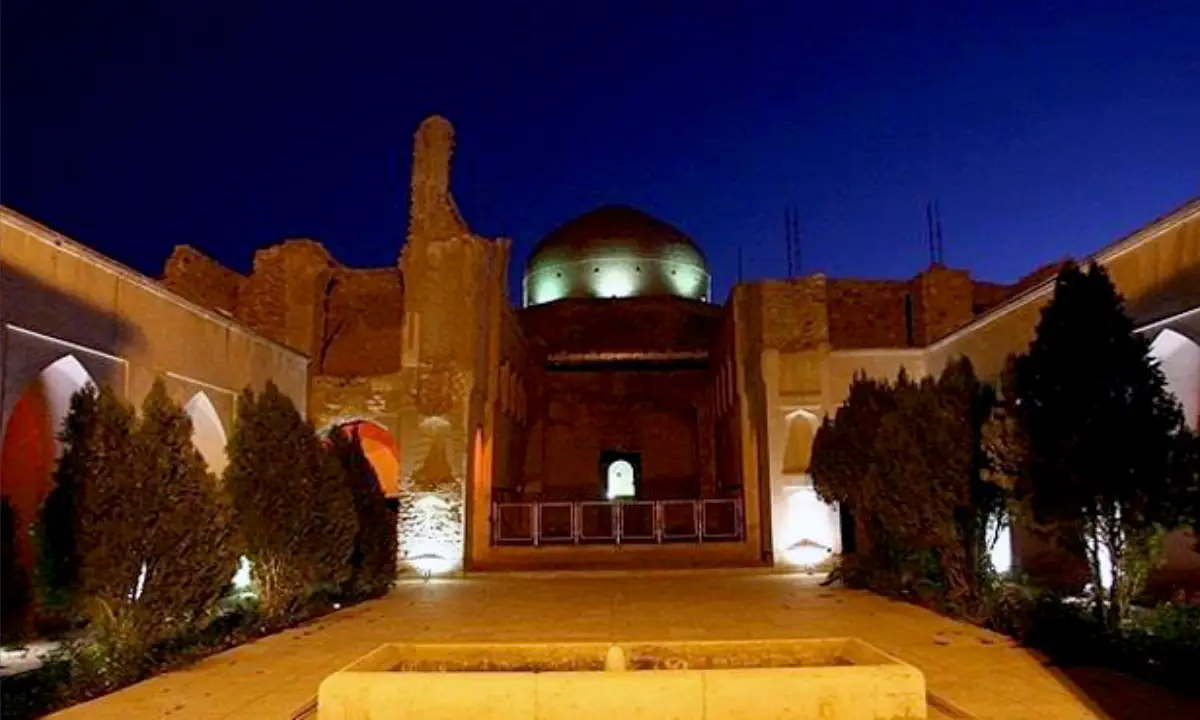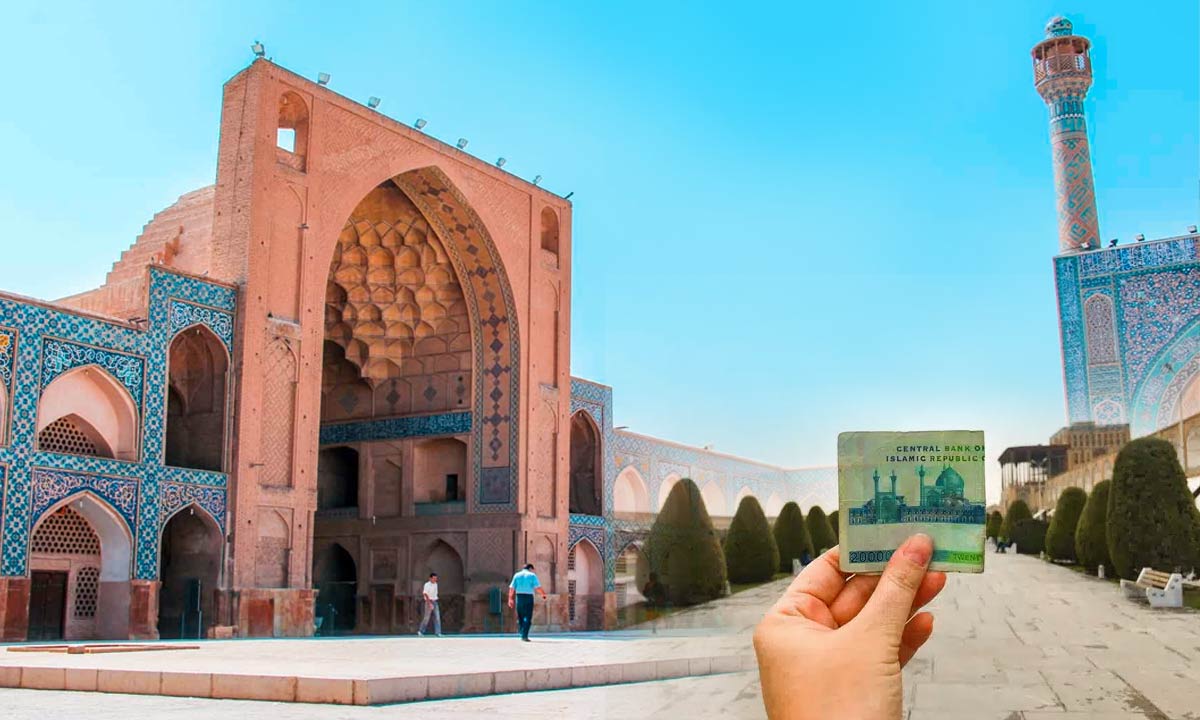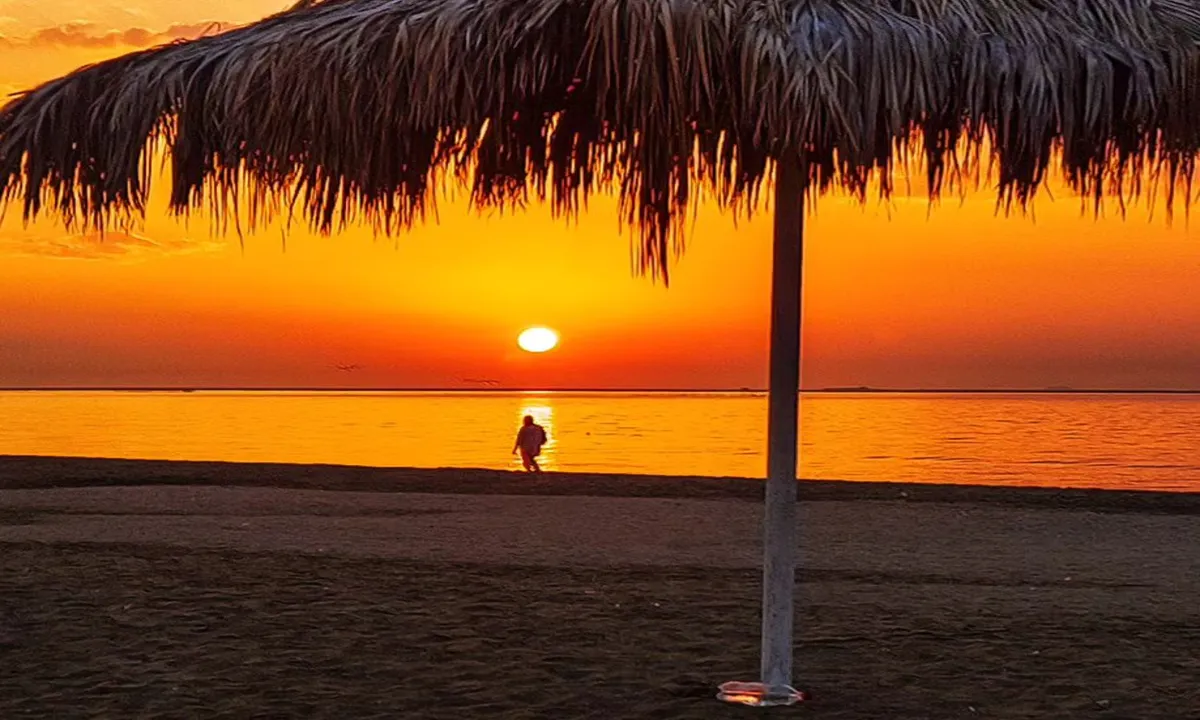Visit Yazd in Iran | Historical and cultural travel guide to Yazd
![]() Author : asal | Date : Tuesday 29 October 2024 09:48
Author : asal | Date : Tuesday 29 October 2024 09:48
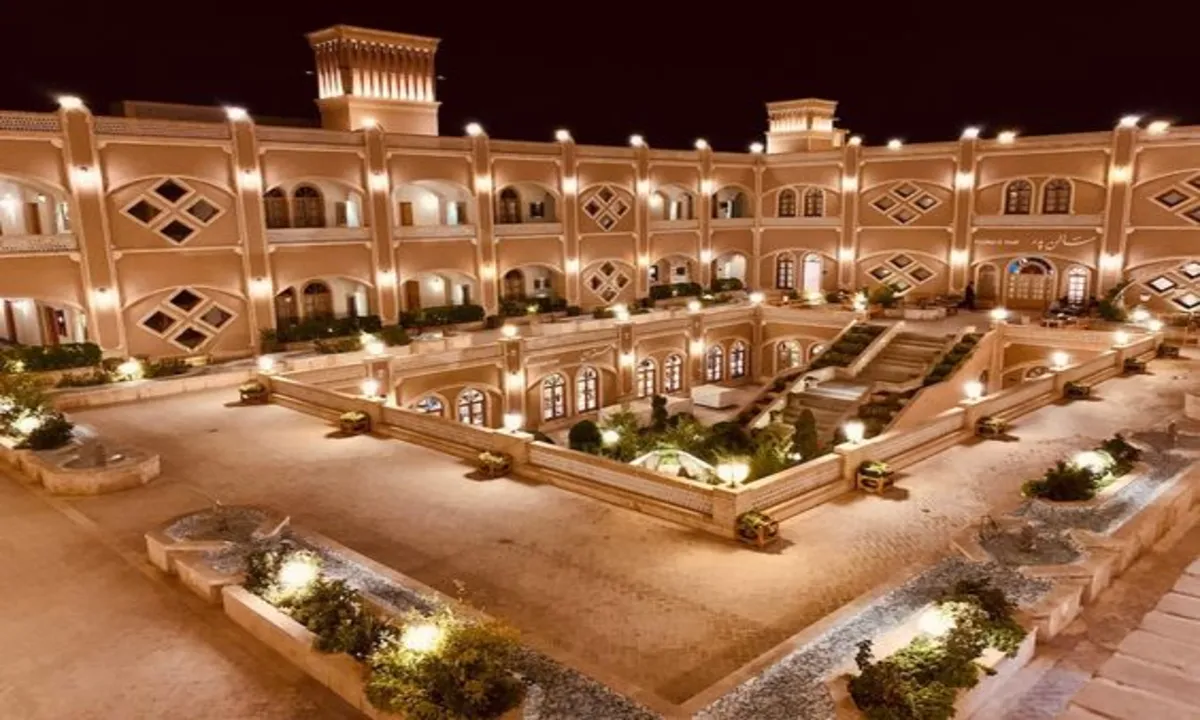
Nestled amidst the arid landscapes of central Iran, Yazd emerges as a captivating travel destination that beckons with its rich history, enchanting architecture, and distinctive culture. Yazd is a city that stands as a testament to the endurance of time, bearing the weight of millennia of human civilization. Its significance as a travel destination lies not only in its historical treasures but also in its unique aspects that set it apart as a must-visit place in Iran. In this article, we're going to check about:
- Where is Yazd?
- Why is Yazd Famous for Tourists?
- The weather in Yazd
- Religion and culture of Yazd people
- Interesting facts about the city of Yazd
- Architecture of Yazd city
- Tourist areas of Yazd
- Historical and old attractions of Yazd
- Yazd souvenirs and handicrafts
- Local dishes of Yazd
Where is Yazd in Iran?
If we want to describe Yazd, we should say that Yazd, centrally located in Iran, is surrounded by Meibod and Ashkazar to the north, Bafaq and Ardakan to the east, and Abarkoh, Taft, and Mehriz to the south, with Isfahan to the west. Covering an expansive area of approximately 72,156 square kilometers, Yazd is home to a population of 529,673 people. The city's inhabitants primarily speak Farsi, flavored with the charming Yazdi dialect. Notably, Yazd stands out as a harmonious melting pot where diverse religious communities coexist, including Muslims, Jews, Christians, and Zoroastrians, with the majority adhering to the Muslim Shiite faith.
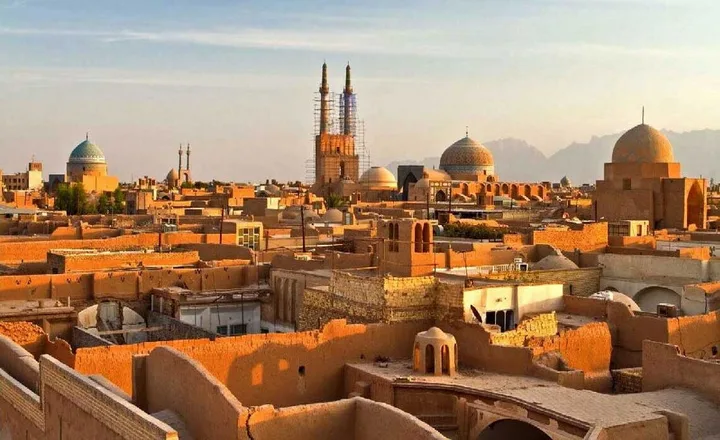
Why is Yazd Famous for Tourists?
Often referred to as the jewel of the Iranian Central Desert, Yazd is a true testament to Iranian architectural marvels, exuding unparalleled elegance and beauty. This city, shaped by its unique climatic conditions, boasts a plethora of soaring wind towers, grand reservoirs, and monumental historical aqueducts. That is why Yazd is very popular among tourists.
Read More:✔️Top Tourist Cities of Iran | 2024 Update
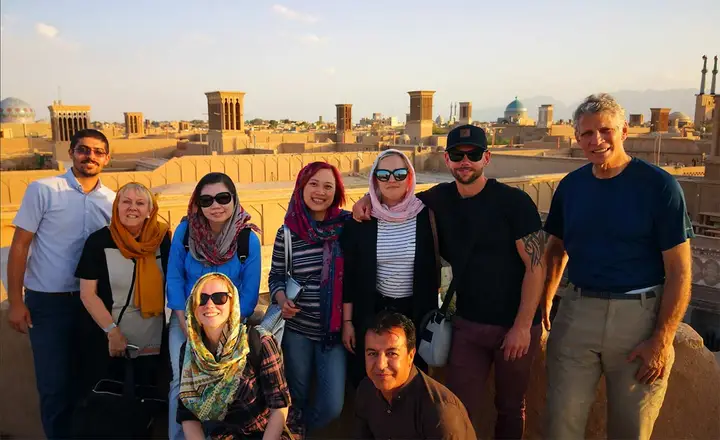
What is the weather like in Yazd in Iran?
Yazd, a city characterized by its arid and scorching climate, is profoundly influenced by its geographical location near the desert. This region receives meager rainfall, and the relentless sun drives intense evaporation rates. In the spring, Yazd experiences a delightful and temperate climate, offering pleasant conditions for outdoor activities. However, as summer sets in, the city succumbs to sweltering and uncomfortable heat, making it advisable for visitors to plan accordingly.
Autumn brings relief to Yazd, with cooler temperatures creating an agreeable atmosphere that envelops the city. During these months, everything in Yazd seems to be in perfect harmony. As winter descends upon the region, temperatures plummet significantly. The month of Bahman marks the zenith of Yazd's cold season, with temperatures reaching their lowest point. Subsequently, the city gradually warms up as it progresses into the following months, offering a more bearable climate for exploration and enjoyment.
Which season is better for traveling to Yazd
The best times to visit Yazd are early spring (March to May) and early autumn when the weather is milder. This period offers a more comfortable experience for exploring the city's unique attractions.
The optimal time to visit Yazd, known for its hot, dry desert climate, is during the milder weather of spring (early March to early May) and early autumn, with pleasant temperatures around 16 degrees Celsius. Renting a car in Yazd, regardless of the season, is a convenient way to explore the city efficiently and cost-effectively. Yazd experiences two major hot seasons from March to October and a brief cooler season from November to February, making spring and autumn the most favorable times for a visit.
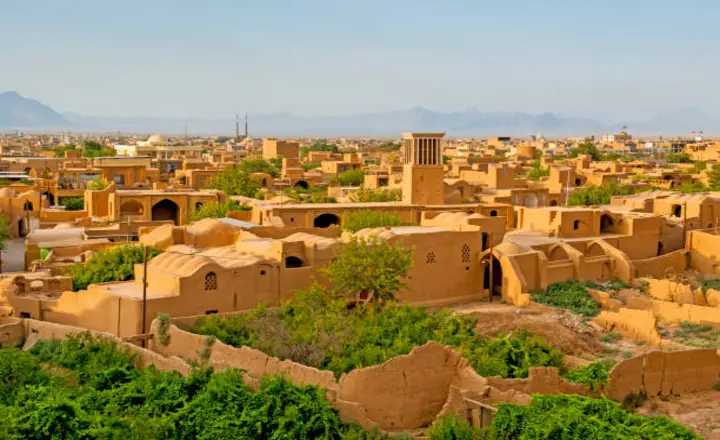
What is the Religion and culture of the Yazd people?
The majority of the population in Yazd, Iran, practices Islam, with the majority adhering to the Shiite branch of Islam. Islam is a fundamental part of the religious and cultural fabric of Yazd, as it is in much of Iran. Mosques and religious institutions are prevalent in the city, and religious practices play a significant role in the daily lives of its inhabitants.
In addition to Islam, Yazd is also renowned as a center for the Zoroastrian community. Zoroastrianism is one of the world's oldest religions, and Yazd is home to a significant Zoroastrian population. The city houses important Zoroastrian religious sites, including the Zoroastrian Fire Temple, where an eternal flame has been burning for centuries. Yazd's Zoroastrian community continues to uphold its ancient traditions, and their cultural contributions are an integral part of the city's identity.
Yazd's cultural heritage is a rich tapestry that includes not only religious diversity but also a deep appreciation for traditional Persian culture. The city is known for its unique architectural style, with mud-brick buildings, wind towers (badgirs), and historic bazaars that reflect the city's long history. Yazd's cuisine, like much of Iran, features a wide variety of dishes, with an emphasis on rice, bread, kebabs, and aromatic spices.
In summary, the people of Yazd primarily practice Islam (Shiite) and have a significant Zoroastrian minority. The city's culture is deeply rooted in Persian traditions, and its architecture, cuisine, and way of life reflect its historical significance and unique blend of influences.
Interesting facts about the city of Yazd
Some of the amazing points of Yazd in Iran are:
- Yazd is renowned as the second historical clay city in the world, characterized by its unique mud-brick architecture.
- Despite being the fifth industrial province in Iran, Yazd faces pollution challenges, making it one of the country's most polluted cities.
- The establishment of Yazd Municipality dates back to the year 1310.
- The primary language spoken by Yazd's residents is Farsi, often infused with the charming Yazdi dialect.
- With a population of approximately 600,000 people, Yazd is a diverse city that also houses minority communities, including Zoroastrians and Jews.
- Yazd is typically referred to as the “birthplace of water, wind, and Qanat architecture,” highlighting its historical significance in these areas.
- Yazd holds the distinction of being the first city in Iran to receive recognition and registration.
- The Jame Mosque in Yazd boasts the tallest minarets in Iran, adding to the city's architectural grandeur.
- Yazd maintains sister city relationships with Homs in Syria, Nizvi in Oman, Yeosu in South Korea, Olgin in Cuba, and Yasbrin in Hungary, fostering international connections.
- Known by various nicknames, including the “City of Winds,” the “City of Bicycles,” “DAR al-Abada,” “City of Winds” (again), and the “Medical Hub of Iran,” Yazd's unique attributes and roles in the country are celebrated and recognized far and wide.
- Yazd's ancient architecture is characterized by its distinctive wind towers, locally known as “badgirs,” which have been ingeniously designed to capture and cool the desert breezes, making them an iconic feature of the city's skyline.
- Yazd is renowned for its traditional handicrafts, including exquisite silk weaving, delicate textiles, and intricate tile work, which are deeply rooted in the city's cultural heritage.
- The city's strategic location along the ancient Silk Road made it a hub for trade and commerce, connecting the East and West and facilitating the exchange of goods, ideas, and cultures.
- Yazd is famous for its sweet and delectable confections, with specialties like “Ghotab” and “Pashmak” that delight both locals and visitors.
- The city's vibrant bazaars, such as the Khan Bazaar and the Fahadan Bazaar, offer a captivating glimpse into its commercial history and continue to be bustling centers of trade and commerce.
- Yazd has been recognized as a UNESCO World Heritage Site due to its outstanding architectural and cultural significance, making it a destination of global acclaim.
- Its unique desert environment, traditional architecture, and cultural diversity have made Yazd an attractive location for filmmakers and artists, with numerous films and artworks inspired by its beauty and charm.
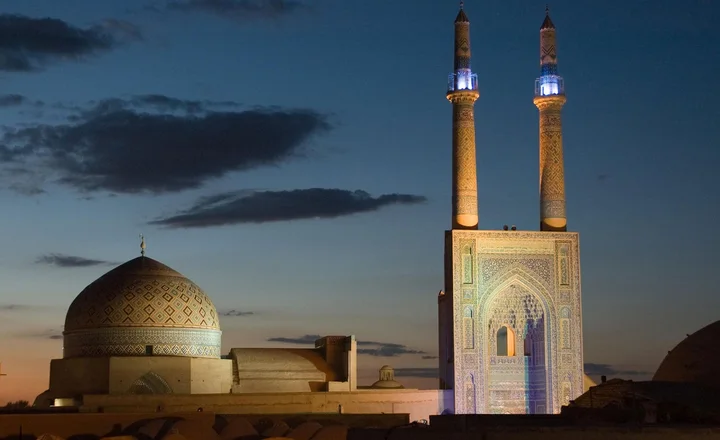
About the Architecture of Yazd City in Iran
The architecture of Yazd is a testament to the city's rich history, unique geographical location, and the ingenuity of its inhabitants. Here are some key highlights and information about the architecture of Yazd:
- Mud-Brick Architecture: One of the defining features of Yazd's architecture is its widespread use of mud-brick construction. The city's buildings, including homes, mosques, and historical sites, are typically constructed from adobe (mud bricks), which helps to insulate against the extreme desert temperatures and reflects the region's ancient architectural traditions.
- Wind Towers (Badgirs): Perhaps the most iconic architectural feature of Yazd is its wind towers, known as “badgirs.” These tall, elaborate structures capture the prevailing winds and funnel cool air into buildings below. They are a testament to the city's innovative approach to natural cooling and are found on rooftops across Yazd.
- Qanat: Yazd's architecture is closely linked to its Qanat system, an ancient underground water management system. Qanat is a network of underground channels that tap into underground aquifers and bring water to the surface. This technology has allowed Yazd to thrive amid a desert and has influenced the layout and design of the city.
- Historical Districts: Yazd boasts several well-preserved historical districts, including the Yazd Old Town, Fahadan, and the Zarch neighborhood. Labyrinthine alleyways, traditional homes, and historical monuments characterize these districts. The city's historic architecture provides a glimpse into its past, offering visitors a step back in time.
- Mosques and Religious Sites: Yazd is home to numerous mosques, each with its unique architectural style. The Jameh Mosque of Yazd, with its towering minarets, is a prime example. Additionally, the city has religious sites such as the Zoroastrian Fire Temple, which showcases a blend of ancient and modern architecture.
- Bazaars: Yazd's bazaars are architectural wonders in themselves. The Khan Bazaar and the Fahadan Bazaar are bustling marketplaces housed within beautiful historical buildings. These bazaars not only serve as commercial centers but also as cultural and architectural landmarks.
- UNESCO World Heritage Status: In 2017, Yazd was recognized as a UNESCO World Heritage Site due to its outstanding architectural and cultural significance. This designation highlights the importance of preserving and protecting the city's unique architectural heritage.
- Modern Architecture: While Yazd is known for its traditional architecture, modern buildings have also emerged in recent years. These blend contemporary design with elements of traditional Persian architecture, creating a harmonious coexistence of old and new.
- Courtyard Houses: Traditional Yazdi homes often feature central courtyards, known as “hayats.” These courtyards serve as private, cool, and serene spaces where families gather and provide natural ventilation for the surrounding rooms.
- Gardens: Yazd's architecture is complemented by lush gardens, which are often located within homes or in public spaces. These gardens are designed with intricate layouts, water features, and shaded areas to provide respite from the desert heat.
- Caravansaries: Due to its location along historical trade routes, Yazd boasts several caravansaries – large roadside inns that cater to travelers and traders. These architectural gems showcase elaborate entrances, courtyards, and accommodations for both humans and animals.
- Cisterns and Reservoirs: To address water storage needs, Yazd features an array of underground reservoirs known as “ab anbars.” These architectural marvels have been essential for the city's survival in the arid climate.
- Safavid Influence: Much of Yazd's historic architecture is influenced by the Safavid era, during which many of the city's mosques, buildings, and public spaces received their distinctive character. The use of blue tile work and intricate tile mosaics is a hallmark of this era.
- Astronomical Structures: Yazd is home to many historical astronomical structures, including the 14th-century Zoroastrian Tower of Silence and the 17th-century Amir Chakhmaq Complex, which features an astronomical observatory and a stunning façade.
- Diverse Architectural Styles: The architecture of Yazd reflects a blend of Persian, Islamic, and Central Asian influences. Visitors can admire the intricate geometric patterns, calligraphy, and tile work that adorn many buildings and monuments.
- Modern Conservation Efforts: Yazd has implemented conservation efforts to preserve its historical architecture. Regulations and incentives encourage the restoration and maintenance of the city's traditional buildings, ensuring they remain part of its urban fabric.
- Architectural Festivals: Yazd hosts various architectural and cultural festivals that celebrate its heritage. These events often include exhibitions, workshops, and guided tours that highlight the city's architectural treasures.
Yazd's architecture is a living testament to the resilience and ingenuity of its people, who have adapted to the challenging desert environment while creating a city of enduring beauty and cultural significance. The combination of historical preservation and contemporary appreciation makes Yazd a truly remarkable architectural destination.
Read More:✔️Why visit Iran for your next travel destination?
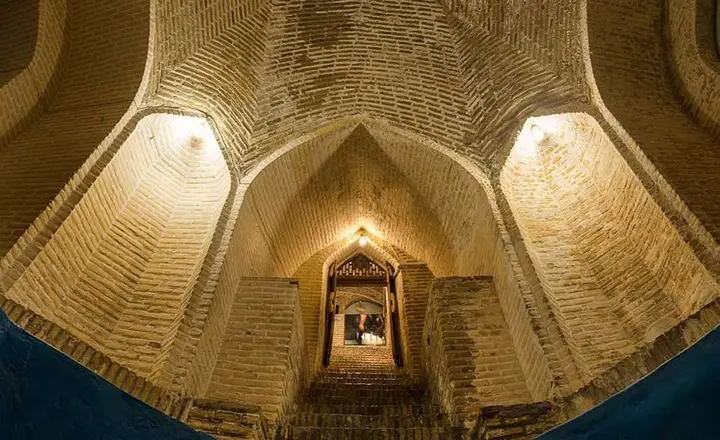
What are the Tourist areas of Yazd?
Yazd is a city rich in history and culture, with numerous tourist areas and attractions that captivate visitors. Here are some of the top tourist areas and sites to explore in Yazd:
- Yazd Old Town (Historic District): The heart of Yazd, the Old Town, is a UNESCO World Heritage Site and a labyrinth of narrow winding streets, mud-brick buildings, and traditional architecture. It's a delightful area to explore on foot, offering a glimpse into the city's historical past.
- Amir Chakhmaq Complex: This iconic complex features a beautifully symmetrical façade with multiple alcoves, arches, and a large square. It's a central gathering point and a prime spot for people-watching, especially in the evenings.
- Jameh Mosque of Yazd: With its towering minarets and stunning tile work, the Jameh Mosque is a masterpiece of Persian architecture. It's one of the most significant religious sites in Yazd and is open to visitors.
Zoroastrian fire temple of Yazd Discovered
The Yazd Fire Temple, a revered Zoroastrian sanctuary, stands as a testament to the faith's traditions, where the eternal Varhoram fire has burned for over 1500 years. Commissioned by the Pahlavi king 84 years ago, this temple serves as a magnificent spiritual hub for Zoroastrians, constructed under the supervision of Arbab Jamshid with contributions from the Persian Zoroastrian community. Its architecture, inspired by Persian and Achaemenid designs, emphasizes simplicity and the pivotal role of fire in worship, with no ornate decorations aside from symbolic Fravashi angels representing the essence of life.
Visitors to the temple are greeted by a tranquil pond, reflecting the traditional presence of water at fire temples. Inside, the sacred Varhoram fire is housed in a bronze cup, viewable behind glass to maintain its purity, symbolizing communal faith. Adherence to specific entry protocols mirrors the site's sanctity, requiring cleanliness, respectful attire, and, for Zoroastrians, the wearing of traditional white garments. This temple not only preserves ancient religious practices but also invites all to witness the enduring legacy of Zoroastrianism in Iran.
- Zoroastrian Towers of Silence: Located on the outskirts of Yazd, these ancient burial sites were used by Zoroastrians in the past. The towers are perched atop hills and offer panoramic views of the surrounding desert.
- Fahadan Neighborhood: Fahadan is one of the oldest neighborhoods in Yazd, known for its well-preserved adobe architecture and traditional homes. It's a great place to explore the city's architectural heritage.
- Dolat-Abad Garden: This historic Persian garden is known for its exquisite design and features a splendid pavilion with a unique wind catcher (badgirs). It's a peaceful oasis in the heart of the city.
- Khan Bazaar: Yazd's bustling bazaars, including Khan Bazaar, offer a glimpse into the city's commercial history. You can shop for souvenirs, textiles, spices, and more while exploring the maze-like alleys.
- Water Museum (Museum of Water and Sewage): This informative museum delves into Yazd's Qanat system, showcasing the technology that allowed the city to thrive in the desert. It's an excellent educational stop.
- Meybod and Na'in: These nearby towns are easily accessible from Yazd and offer attractions such as ancient caravansaries, mud-brick fortresses, and traditional crafts like pottery and textiles.
- Chak Chak: Located a bit further from Yazd, Chak Chak is a revered Zoroastrian pilgrimage site nestled in a mountain. The small cave temple is known for its miraculous dripping spring.
- Yazd Art House: This cultural center features art exhibitions, workshops, and performances, making it a hub for artistic expression and creativity.
- • Chak Chak (Pir-e Sabz Fire Temple): Located about 70 kilometers from Yazd, Chak Chak is a significant Zoroastrian pilgrimage site. It is believed to be the place where Nikbanou, the daughter of the last Sassanian king, sought refuge and miraculously turned a rock into a spring.
- Kharanagh Village: This ancient village, situated about 85 kilometers from Yazd, is known for its well-preserved mud-brick architecture, a traditional cistern, and a tall minaret that offers panoramic views of the desert.
- Yazd Water Museum: Located in a restored historical mansion, this museum offers insights into the traditional Qanat system and the importance of water management in Yazd's history.
- Lariha House: A beautifully restored historical house that now serves as a museum, Lariha House provides a glimpse into the lifestyle and architecture of the affluent residents of Yazd in the past.
- Yazd Art Garden: This serene garden is a peaceful oasis where you can relax amid lush greenery, fountains, and traditional architecture. It's a great place for a stroll or a picnic.
- Kavir National Park: Located to the south of Yazd, this desert park offers opportunities for hiking, wildlife spotting, and stargazing. It's an excellent place to experience the vastness of Iran's central desert.
- Yazd Tower: A modern architectural marvel, the Yazd Tower is a shopping complex and entertainment center that includes a Ferris wheel offering panoramic views of the city.
- Golestan Garden: Located in the heart of the old town, this historic garden is a tranquil spot to unwind and appreciate the beauty of traditional Persian gardens.
- Yazd Zurkhaneh: Zurkhaneh is a traditional Iranian gym combining physical exercise and spirituality. Witnessing a Zurkhaneh session can be a unique cultural experience.
- Carpet Workshops: Yazd is known for its handwoven carpets, and visiting a carpet workshop can provide insight into the intricate process of carpet making.
Yazd offers a diverse range of attractions and experiences, from ancient historical sites to modern entertainment centers. Whether you're interested in history, culture, nature, or simply exploring the desert city's unique ambiance, Yazd has something to offer every traveler.
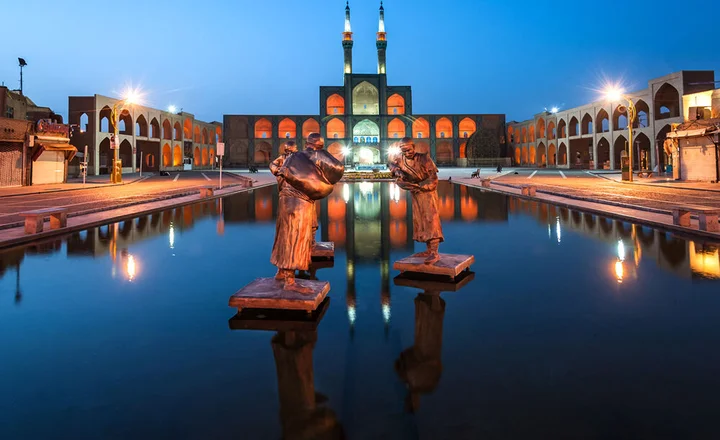
About Historical and old attractions of Yazd
- Dolat-Abad Garden
- Rustam Giv Water Reservoir
- Khan Bafghi Garden
- Mashir al-Mamalek Garden
- Khan Bafghi Bathhouse.
One of the primary tourist attractions in Yazd is its historic bazaars, which have garnered significant attention. Notable among these famous bazaars are the:
- Gheisariyeh Bazaar
- Khan Bazaar
- Hajj Gholamreza Bazaar
- Panjeh Ali Bazaar
- Afshar Bazaar
- Shahzadeh Fazl Bazaar
- Mesgari Bazaar
- Alaqqabandi Bazaar
Yazd boasts renowned squares like:
- Amir Chakhmaq Square
- Saat Square
- Ba'athat Square
- Ghaleh Square
- Lord Mashir Square
- Lord Keyvan Square
In terms of architecture, the city's mosques showcase some of the finest architectural styles in the province:
- The Jameh Mosque
- behind-the-garden Mosque
- Amir Chakhmaq Mosque
- Ahrestan Mosque
- Old Castle Mosque
- Fort Mosque
- Shah Tahmasb Mosque
Are among the oldest and most distinguished mosques in Yazd.
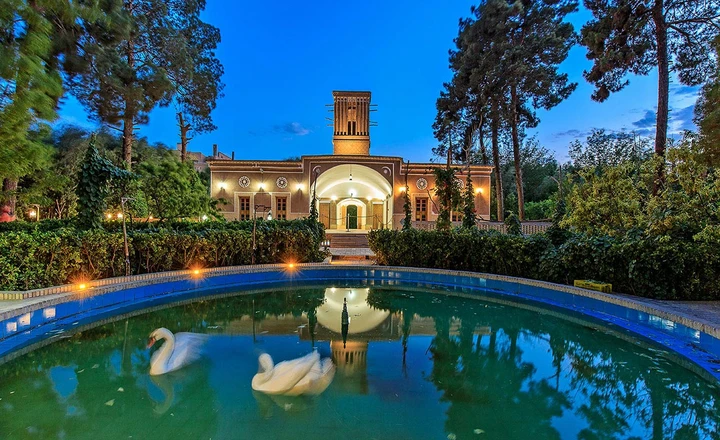
What are the Yazd souvenirs and handicrafts?
Yazd offers a delightful array of souvenirs and handicrafts that reflect the city's rich cultural heritage and traditional craftsmanship. When visiting Yazd, you can consider purchasing these unique items as keepsakes or gifts:
- Termeh Textiles: Termeh is a luxurious Persian textile known for its intricate patterns and vibrant colors. Yazd is famous for producing high-quality Termeh, often featuring traditional Persian designs. You can find Termeh tablecloths, scarves, and decorative items.
- Persian Carpets and Rugs: Yazd is renowned for its handwoven Persian carpets and rugs. These intricate and finely crafted textiles typically feature geometric patterns and floral designs. They make for exceptional souvenirs or investments.
- Silk and Velvet Fabrics: Yazd is known for its silk and velvet textiles, which are used in crafting clothing items such as traditional women's dresses (chadors), scarves, and decorative pieces.
- Pottery and Ceramics: The city has a long history of pottery production. Look for beautifully glazed ceramic bowls, plates, and tiles with intricate Persian designs. Meybod, a nearby town, is famous for its pottery workshops.
- Golab (Rose Water): Yazd is known for producing fragrant rose water from local Damask roses. It's a popular ingredient in Persian cuisine and perfumes. You can purchase bottles of pure rose water as a souvenir.
- Copperware: Skilled artisans in Yazd craft intricate copperware, including trays, vases, teapots, and decorative items. These hand-hammered copper pieces showcase traditional Persian designs.
- Traditional Textiles: Yazd offers a wide range of traditional textiles, including colorful fabrics, scarves, and clothing items. These textiles often feature regional designs and can be used in clothing or as home decor.
- Enamelware: Enamelware items like plates, teapots, and decorative pieces can be found in Yazd. They are typically adorned with colorful enamel patterns and make for beautiful additions to your home.
- Ghotab and Yazdi Sweets: Ghotab is a traditional Yazdi sweet pastry filled with nuts and spices. You can purchase these delicious treats as edible souvenirs. Yazd is also known for its other sweets, like Pashmak (cotton candy) and baklava.
- Miniature Paintings: Yazd is home to skilled miniature painters who create intricate Persian miniature paintings. These delicate artworks frequently depict scenes from Persian literature and history.
- Jewelry: Yazd offers a variety of traditional and contemporary Persian jewelry pieces, including rings, necklaces, and earrings, often featuring gemstones and unique designs.
- Leather Goods: Yazd is known for its leather work, including belts, bags, wallets, and shoes. Skilled artisans regularly adorn leather products with intricate designs and embossing.
- Woodwork: Wooden handicrafts are also popular in Yazd. Look for items like intricately carved wooden boxes, trays, and decorative pieces that showcase traditional Persian motifs.
- Khatamkari: Khatamkari is an intricate Persian marquetry technique that involves creating geometric patterns using pieces of wood, bone, or metal. You can find Khatamkari artwork on boxes, frames, and other decorative items.
- Spices and Herbs: Explore the local spice markets to discover a wide range of aromatic spices and herbs used in Persian cuisine. Saffron, cardamom, cumin, and dried rose petals are among the sought-after choices.
- Metalwork: Yazd's metalworkers produce exquisite pieces of metal art, including brass trays, copper vases, and silver jewelry. These items often feature intricate engraving and detailed designs.
- Calligraphy Art: Calligraphy is highly regarded in Persian culture. You can find calligraphy art pieces, such as framed Quranic verses or poetic lines, created by talented local calligraphers.
- Traditional Clothing: Yazd offers an opportunity to purchase traditional Iranian clothing, including men's and women's attire such as scarves, tunics, and traditional dresses.
- Wooden Latticework (Nagashi): Wooden latticework, known as “nagashi,” is used in Persian architecture for screens and window coverings. You can find decorative wooden panels and items featuring this intricate craftsmanship.
- Local Foods: Besides sweets, Yazd offers a variety of local foods and culinary specialties that you can take home as souvenirs. Look for local dates, nuts, dried fruits, and saffron.
- Miniature Persian Carpets: While full-sized Persian carpets are exquisite but may be challenging to transport, miniature carpets with intricate designs are easier to carry and make for unique decorative items.
- Zoroastrian Symbols: As a city with a significant Zoroastrian heritage, you may find souvenirs and jewelry featuring Zoroastrian symbols, such as Faravahar, a winged symbol representing Zoroastrianism.
When shopping for these souvenirs and handicrafts in Yazd, don't forget to explore the local markets, bazaars, and craft shops, where you can interact with artisans and learn about the history and craftsmanship behind these items.
Read More:✔️souvenirs and handicrafts; what to buy in Yazd?
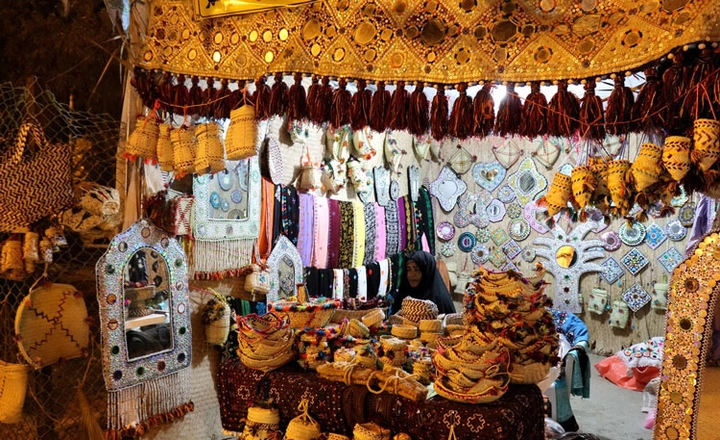
What are the Local dishes of Yazd in Iran?
Yazd, a city with a rich culinary heritage, offers a variety of delicious and unique local dishes that reflect the flavors and traditions of the region. When visiting Yazd, be sure to try some of these local dishes and specialties:
| Abgoosht-e Yazdi | Baghali Ghatogh |
| Fesenjan | Yatimcheh |
| Gheimeh Yazdi | Khoresht-e Mast |
| Shir Berenj | Kaleh Joosh |
| Baqlava Yazdi | Bamiyeh |
| Shole Zard | Havij Polo |
| Ash-e Shole Ghalamkar | Sheermal |
| Morasa Polo | Loze Nargil (Coconut Cookies) |
Last Word
In conclusion, a journey to Yazd, Iran, is a captivating voyage through time, where history and culture intertwine seamlessly. As a city with an ancient soul and a vibrant cultural heartbeat, Yazd offers travelers a unique opportunity to explore its rich heritage, architectural marvels, and traditional cuisine. From the maze-like lanes of its UNESCO-listed Old Town to the enchanting call of its minarets, Yazd beckons adventurers and history enthusiasts alike. Whether you seek to wander through its centuries-old bazaars, marvel at the intricate craftsmanship of its handicrafts, or savor the flavors of its local dishes, Yazd promises an unforgettable and enriching experience. Discover the magic of Yazd, where tradition and modernity coexist harmoniously, leaving an indelible mark on every traveler's heart.
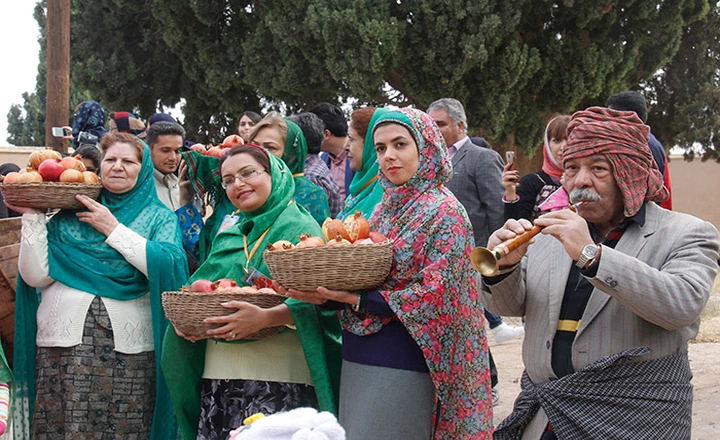
FAQ
What is the best time to visit Yazd for a historical and cultural experience?
The best time to visit Yazd for a historical and cultural experience is during the spring (March to May) and early autumn (September to November). The weather is mild, and you can explore the city's attractions comfortably without extreme heat or cold.
What are some must-visit historical sites in Yazd?
Some must-visit historical sites in Yazd include the Jameh Mosque of Yazd, Amir Chakhmaq Complex, the Zoroastrian Fire Temple (Atashkadeh), and Yazd Old Town. These sites showcase the city's architectural beauty and cultural significance.
How can I explore the Zoroastrian heritage in Yazd?
To explore the Zoroastrian heritage in Yazd, you can visit the Zoroastrian Fire Temple (Atashkadeh) and the Zoroastrian Towers of Silence. These sites offer insights into the religion's history and practices. Yazd also has a Zoroastrian Museum where you can learn more about their culture.


